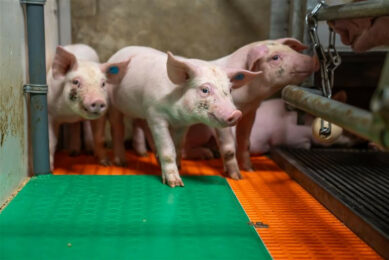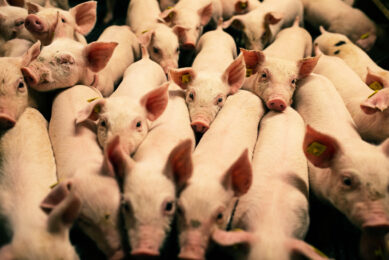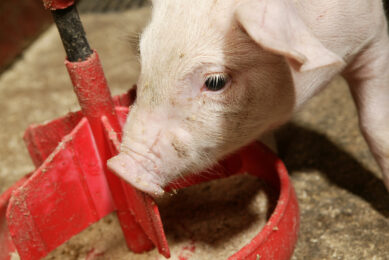Getting that just-weaned piglet to eat
Getting the newly-weaned piglets to eat enough immediately after weaning can be a real problem. On every nursery I tour I look for the following. I see from my notes that in the last 20 farms visited the following practices tended not to be done.
There have been some memorable ‘wise sayings’ in the past. For instance, Prof Colin Whittemore’s ‘acceleration and cruising‘ zones of protein growth, or Dr Peter English’s ‘Farm for the smallest pig in the litter‘.
And that great pig farm manager, Howard Hill, ‘Don’t mix those damned pigs!‘ And now a another one – Dr Mike Varley’s recent ‘Day one post-weaning is the longest day in the pig’s life‘. You can probably think of several more.
Getting the newly-weaned piglets to eat enough immediately after weaning can be a real problem. I have found that the difference between this being done well and only typically is another 2 kg heavier out of the nursery and some 22 kg more lean meat sold per tonne of feed at 105 kg live.
On every nursery I tour I look for the following. I see from my notes that in the last 20 farms visited the following practices tended not to be done.
Hygiene
Newly-weaned pigs especially will eat less if the surroundings are dirty! Four nurseries were clean enough but he the upper walls and ceilings were not. Largely because they were old and decrepit or through pressure of workload.
Temperature
Eight nurseries were too hot at one week from entry date. Establish what the lower critical temperature is for the pigs (it will vary on most farms and you need specialised advice) and lower it by 1 to 2ËšC for a few days after weaning. They will be keener to eat. Then you can resume the textbook levels.
Lighting
Just like ourselves pigs sleep more soundly in the dark. Try leaving the lights on all the time for the first 24 hours. This encourages the submissives to visit the trough when the dominants are asleep. There is a feeling of ‘group safety’ in the dark. None of the farmers did this.
‘Flat-matting’
This is the technique of giving just a few pellets on a flat mat with 1 cm high flanged sides. These are replaced /added to/ kept clean often – about four times a day. Six nurseries did this, but only two sufficiently often. Remember – little and often. The mat is placed near a feeder and should be well-lit.
Water
Two drinkers per pen are essential, never just one, and set at the right height by using an adjustable drinker. The right height for a nipple drinker is to get the pig’s head inclined at a 15Ëš angle upwards from the its backline.
Creep feeding prior to weaning
The right formula – especially the right ingredients – offered skillfully from four to seven days after being born gets the piglets accustomed to solid food, especially those which are smaller or more timid.
Mixing
As you know, great skill is needed to get the groups settled and eating quickly. Try spraying the groups with a lavatory-freshener aerosol as soon as they are mixed. Nobody did this. Not a cure-all against fighting,.but it does seem to settle them faster.
Pellet hardness
I discovered this in my feed manufacturing days when the compounder I worked for had a spell of supplying dusty pellets. The mill’s response was to supply some rock-hard replacement batches. That wasn’t the answer either and eventually they managed to make a tough pellet of the right softish consistency. Ideally, I could just crush the pellet from really strong, slightly lateral pressure between thumb and index finger. I do this test on every nursery I visit. The pellets need to be durable and soft for newly-weans.
Moist-to-liquid starter meals
Yes, this does increase first to second day intake considerably but there is a huge cleanliness risk and the skills needed to keep the receptacles spotless at all times are often lacking, otherwise scouring appears. This gives the concept and the feed used a bad name.
To finish on a positive note – overstocking is not a problem immediately post-weaning, but from two to three weeks onwards is commonplace.
Ventilation is much better these days as producers have spent money on this stage of the pigs life – but the older nurseries are still a real problem.











